
Delphinus is a small constellation in the Northern Celestial Hemisphere, close to the celestial equator. Its name is the Latin version for the Greek word for dolphin (δελφίς). It is one of the 48 constellations listed by the 2nd century astronomer Ptolemy, and remains one of the 88 modern constellations recognized by the International Astronomical Union. It is one of the smaller constellations, ranked 69th in size. Delphinus' five brightest stars form a distinctive asterism symbolizing a dolphin with four stars representing the body and one the tail. It is bordered by Vulpecula, Sagitta, Aquila, Aquarius, Equuleus and Pegasus.
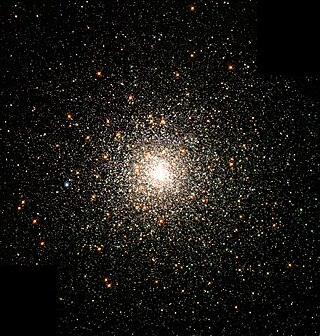
A globular cluster is a spheroidal conglomeration of stars. Globular clusters are bound together by gravity, with a higher concentration of stars towards their centers. They can contain anywhere from tens of thousands to many millions of member stars. Their name is derived from Latin globulus. Globular clusters are occasionally known simply as "globulars".

Sagittarius is one of the constellations of the zodiac and is located in the Southern celestial hemisphere. It is one of the 48 constellations listed by the 2nd-century astronomer Ptolemy and remains one of the 88 modern constellations. Its old astronomical symbol is (♐︎). Its name is Latin for "archer". Sagittarius is commonly represented as a centaur pulling back a bow. It lies between Scorpius and Ophiuchus to the west and Capricornus and Microscopium to the east.

Messier 4 or M4 is a globular cluster in the constellation of Scorpius. It was discovered by Philippe Loys de Chéseaux in 1745 and catalogued by Charles Messier in 1764. It was the first globular cluster in which individual stars were resolved.

Messier 3 is a globular cluster of stars in the northern constellation of Canes Venatici.
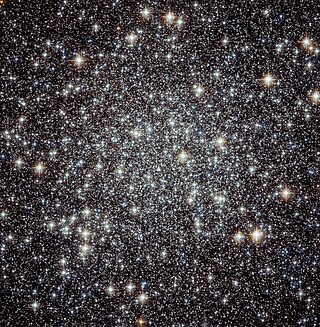
Messier 22 or M22, also known as NGC 6656, is an elliptical globular cluster of stars in the constellation Sagittarius, near the Galactic bulge region. It is one of the brightest globulars visible in the night sky. The brightest stars are 11th magnitude, with hundreds of stars bright enough to resolve with an 8" telescope. It is just south of the sun's position in mid-December, and northwest of Lambda Sagittarii, the northernmost star of the "Teapot" asterism.
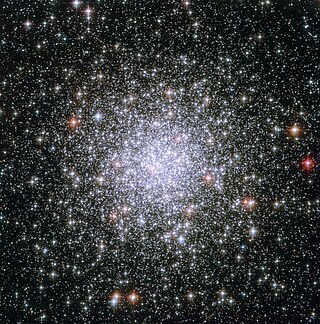
Messier 69 or M69, also known NGC 6637, is a globular cluster in the southern constellation of Sagittarius. It can be found 2.5° to the northeast of the star Epsilon Sagittarii and is dimly visible in 50 mm aperture binoculars. The cluster was discovered by Charles Messier on August 31, 1780, the same night he discovered M70. At the time, he was searching for an object described by Nicolas-Louis de Lacaille in 1751–2 and thought he had rediscovered it, but it is unclear if Lacaille actually described M69.

NGC 6522 is a globular cluster in the constellation Sagittarius. It is apparent magnitude 8.3, and diameter 16.4 arc minutes, and class VI with stars 16th magnitude and dimmer. It was discovered by William Herschel on June 24, 1784. It is centered in a region of the sky known as Baade's Window.
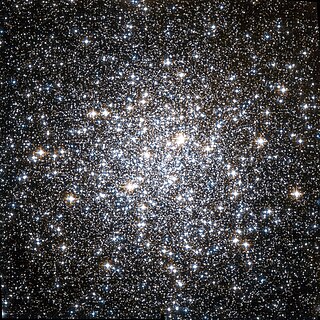
NGC 6723 is a globular cluster in the constellation Sagittarius. Its magnitude is given as between 6 and 6.8, and its diameter is between 7 and 11 arcminutes. It is a class VII cluster with stars of magnitude 14 and dimmer. It is near the border of Sagittarius and Corona Australis.

NGC 1851 is a relatively massive globular cluster located in the southern constellation of Columba. Astronomer John Dreyer described it as not very bright but very large, round, well resolved, and clearly consisting of stars. It is located 39.5 kilolight-years from the Sun, and 54.1 kilolight-years from the Galactic Center. The cluster is following a highly eccentric orbit through the galaxy, with an eccentricity of about 0.7.

NGC 6067 is an open cluster in the constellation Norma. It is located to the north of Kappa Normae, with an angular diameter of 12′. Visible to the naked eye in dark skies, it is best observed with binoculars or a small telescope, and a 12-inch aperture telescope will reveal about 250 stars. Discovered by James Dunlop in 1826, it has been described by John Herschel as "a most superbly rich and large cluster" and by Stephen James O'Meara as "one of the sky’s most stunning open star clusters". Its brightest stars have an apparent magnitude of around 8. There are 84 member stars with an apparent magnitude brighter than 12.
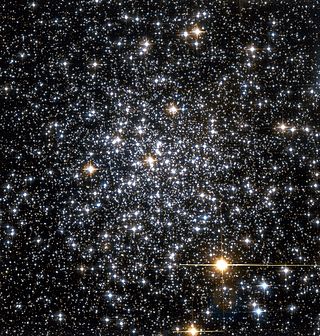
NGC 6352 is a globular cluster of stars in the southern constellation of Ara, located approximately 18.3 kly from the Sun. It was discovered by Scottish astronomer James Dunlop on May 14, 1826. The cluster has a Shapley–Sawyer Concentration Class of XI:. A telescope with a 15 cm (5.9 in) aperture is required to resolve the stars within this loose cluster.

NGC 6496 is a globular cluster which is in the direction of the Milky Way's galactic bulge based on observations collected with the WFPC2 on board the Hubble Space Telescope. NGC 6496 was originally believed to be a member of the disc system of the galactic center, but scientists questioned this classification. It was instead suggested that NGC 6496, together with two other clusters, NGC 6624 and NGC 6637, could be halo clusters with strongly inclined orbits. NGC 6496 lies in the Southern sky at RA=17:59:03.68 and Dec=-44:15:57.4.
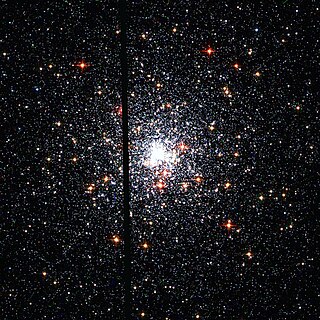
NGC 6624 is a globular cluster in the constellation Sagittarius. It was discovered on 24 June 1784 by the astronomer William Herschel. It is given an apparent magnitude of 7.6 to 8.5. Six pulsars are known in NGC 6624. The first of these to be discovered was PSR J1823-3021A. This globular cluster also contains 4U 1820-30, a low-mass X-ray binary with an orbital period of only 11.5 minutes.
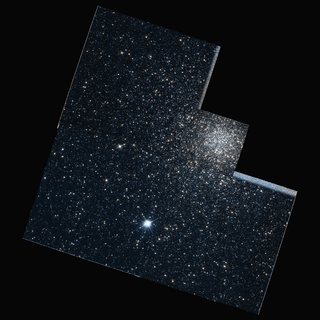
NGC 6316 is a globular cluster located in the constellation Ophiuchus. Its Shapley-Sawyer Concentration Class is III, meaning that it has a "strong inner core of stars" and was discovered by the German-born British astronomer William Herschel on 24 May 1784. It is at a distance of about 37,000 light years away from the Earth. NGC 6316 has a metallicity of -0.45; this means that its ratio of hydrogen/helium to other elements is only 35% that of the Sun, but still enough to be considered a "metal-rich" globular cluster.
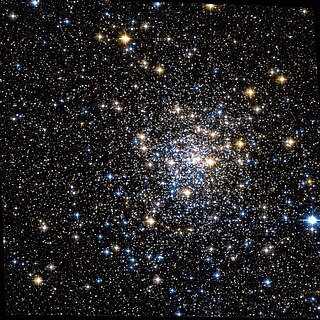
NGC 6544 is a small globular cluster visible in the constellation Sagittarius. It is magnitude 7.5, diameter 1 arcminute. It is less than 1 degree southeast of Messier 8, the Lagoon Nebula.
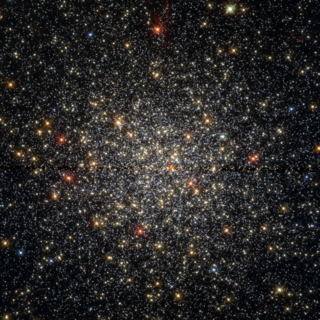
NGC 5927 is a globular cluster in the constellation Lupus. NGC 5927 has a diameter of about 12 arcminutes and an apparent magnitude of +8.86. Its Shapley–Sawyer Concentration Class is VIII, and it contains stars of magnitude 15 and dimmer.
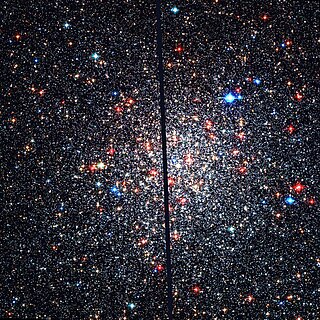
NGC 6553 is a globular cluster in the constellation Sagittarius. NGC 6553 has an apparent magnitude of about 8th magnitude with an apparent diameter of 8.2 arcminutes. Its Shapley–Sawyer Concentration Class is XI, meaning the star concentration is very loose even at the center; it has stars of magnitude 20 and dimmer. It is located just over a degree southeast of Messier 8, the Lagoon Nebula.
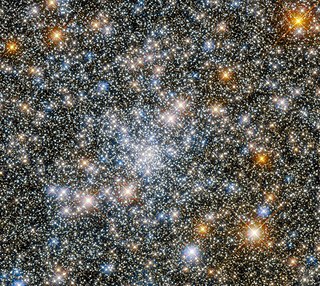
NGC 6540 is a globular cluster in the constellation Sagittarius. Its apparent magnitude is 9.3 and its diameter is about 9.5 arcminutes, with 12 faint stars visible. It is about 17,000 light years away from Earth and was discovered by Wilhelm Herschel on May 24, 1784 with an 18.7-inch mirror telescope, who described the cluster as "pretty faint, not large, crookedly extended, easily resolvable".
NGC 7492 is a globular cluster in the constellation Aquarius. It was discovered by the astronomer William Herschel on September 20, 1786. It resides in the outskirts of the Milky Way, about 80,000 light-years away, more than twice the distance between the Sun and the center of the galaxy, and is a benchmark member of the outer galactic halo. The cluster is immersed in, but does not kinematically belong to, the Sagittarius Stream.





















